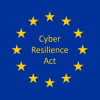What is the Zero Trust Model?
The goal of the zero trust security model is to protect corporate networks against access threats by enforcing a “never trust, always verify” approach. You can implement zero trust security by ensuring your network does not trust any device or user by default. It means your network should never trust any entity, even if it were previously verified.
The zero trust model is particularly valuable for modern enterprise environments and complex corporate networks. These environments often consist of numerous interconnected segments, mobile and remote connections, cloud-based infrastructure and services, and Internet of Things (IoT) devices.
Zero trust security offers various controls you can use to tighten the security of modern enterprise environments, including mutual authentication techniques:
- Verify device integrity and identity regardless of the location.
- Provide access to services and applications according to device health and identity confidence level, in addition to user authentication and authorization.
Pros and Cons of the Zero Trust Model
Here are some advantages of the zero trust model:
- Reduced attack surface—once established, a zero trust model provides better security than an implicit trust approach, particularly when it comes to protecting against in-network lateral threats.
- Strong policies for user identification and access—with zero trust, you should tightly manage users inside the network to secure their accounts. Use multi-factor authentication or biometrics to ensure that all accounts are well guarded. Group users into roles, granting them access to data and accounts when it is needed for a job task.
- Smart segmentation of data—in a zero trust model, you should segment data according to sensitivity, type, and use. This approach provides a more secure setup than one central data pool accessible to all users. With a zero trust approach, sensitive or critical data is secure, and you reduce potential attack surfaces.
- Increased data protection—zero trust protects data in storage and transit, meaning automated backups and hashed or encrypted message transmission.
- Security orchestration—this task involves ensuring that all your security elements work well together. In a successful zero trust model, no holes remain uncovered and the combined elements of your security approach work well together and don’t present incongruities.
Here are some challenges associated with a zero trust strategy:
- Increased time and effort to set up—when you establish a zero trust approach, you need to reorganize policies within your existing network. This process can be challenging because your network needs to function during the transition towards zero trust. Sometimes it’s simpler to build a new network. If your legacy systems are not compatible with the zero trust framework, you will need to start a network from scratch.
- Increased user management effort—you need to monitor users more closely with a zero trust approach, granting them access to data only when required. Users can also include employees, customers, clients, and third-party vendors, meaning there are a wide variety of access points. With a zero trust framework, the organization must maintain specific policies for each group.
- More devices to manage—not only do you need to monitor your users, but you also have to monitor their devices. Each device may have particular properties and communication protocols, which must be secured and monitored according to their type.
- Complex application management—modern organizations use hundreds of applications. They can be cloud-based, and users access them across multiple platforms and devices. Organizations also share them with third parties. In keeping with a zero trust approach, you must tailor, plan and monitor each application according to security requirements and user needs.
- More stringent data security—data is generally stored in more than one location, meaning there are often multiple sites to protect. You need to set and enforce data security policies according to the highest security standards.
Luckily, new technologies are evolving that help deal with many of these challenges. In the early days, you had to build a zero trust implementation from scratch. Today, zero trust is far from being a commodity, but there are already mature, dedicated solutions that can help you set up significant parts of the zero trust stack. Let’s review the most important ones.
Zero Trust Technologies
Microsegmentation
Microsegmentation is the foundational technology of zero trust. It enables you to split your network into logical, secure units. This technique lets you define and apply policies that control data and applications access and usage within each segmented area of the network.
Microsegmentation aims to limit the traffic allowed to traverse from one segment to another. This type of limitation restricts lateral movement across the network, minimizing the attack surface. You can apply network microsegmentation to data centers as well as cloud environments. In a zero trust environment, all other components integrate with, or themselves provide, microsegmentation capability, to create a secure micro-perimeter around each valuable asset.
Secure Access Service Edge (SASE)
SASE is a cloud architecture model that unifies wide area network (WAN) functionality with Security as a Service functions into one centralized service. Organizations can use SASE to centralize all their security and network tools into one management console.
Here are key benefits of SASE:
- Centralizes your networking and security tools.
- Provides access independent of user and resource locations.
- Offers a scalable and cost-effective remote access solution that efficiently handles both security and networking responsibilities.
Extended Detection and Response (XDR)
XDR tools offer SaaS-based incident response and threat detection capabilities. XDR tools integrate several security products into a centralized security operations system. There are vendor-centric XDR tools that provide multiple, integrated components under one license, and open XDR tools that focus on the data storage and analytics, integrating with existing security tools.
Here are key benefits of XDR:
- Centralizes your incident detection and response capabilities.
- Provides a holistic and simplified view of threats across the entire technology landscape.
- Delivers real-time threat insights that can improve the speed and efficiency of incident remediation.
- Leverages artificial intelligence (AI) detect evasive threats that cut across security silos and boundaries.
MITRE ATT&CK Framework
MITRE is a non-profit organization offering information on cyber threats to help solve cyber defense issues. As part of their efforts, MITRE offers the Adversarial Tactics, Techniques & Common Knowledge (ATT&CK) framework as a free and globally-accessible knowledge base.
The MITRE ATT&CK framework offers up-to-date information on adversary tactics and techniques. It is based on real-life observations and a continuously evolving knowledge base of tactics, techniques, and matrices. Organizations can leverage the framework to strengthen their cybersecurity strategies.
ATT&CK is not a zero trust technology per se. However, in a zero trust environment, threat intelligence is key to intelligent verification and monitoring of user connections. This comprehensive collect of tactics, techniques and procedures (TTPs) can help security systems identify that a threat is present in the system and automatically respond by tightening network segmentation and revoking access.
Next-generation Firewall (NGFW)
NGFW is a third generation of firewall technology you can implement as either software or hardware. This firewall enforces security policies at several levels, including ports, protocols, and applications, to detect and block sophisticated attacks.
Here are notable capabilities of NGFW technology:
- Bridged and routed modes
- Application control
- Identity awareness, including group and user control
- Integrated intrusion prevention systems (IPS)
- Integration with external intelligence sources
NGFW technology is unique in that it can understand the different types of web application traffic passing through the firewall. It uses this information to block traffic that can potentially exploit vulnerabilities. It is critical in a zero trust setting because of its application awareness, advanced detection capabilities, and close integration with network segmentation.
Identity and Access Management (IAM)
IAM provides technology, processes, and policies that help manage digital and electronic identities. In a zero trust setting, organizations use IAM to control user access to everything – both inside their corporate networks, in cloud environments, and elsewhere.
Here are notable features of IAM that can provide secure distributed access for zero trust:
- Single sign-on (SSO) and federated identity
- Privileged access management (PAM)
- Multi-factor authentication (MFA)
IAM technologies also enable you to store profile and identity data securely. Additionally, many tools provide data governance functions to help control what data users can access and share, adding another layer of protection to the zero trust model.
Conclusion
In this article I explained the basics of zero trust, and introduced a stack of mature technologies that can help you implement it:
- Microsegmentation – enables dynamic isolation of network segments to secure protected resources.
- Secure Access Service Edge (SASE) – provides wide area networking (WAN) as a managed service with security features built in.
- Extended Detection and Response (XDR) – centralizes security data and tools, enabling security analysis, automated and manual response from one interface.
- MITRE ATT&CK Framework – provides threat intelligence that can help detect malicious activity by previously verified entities.
- Next-generation Firewall (NGFW) – analyzes and blocks malicious traffic at the application layer and implements microsegmentation rules.
- Identity and Access Management (IAM) – enables fine-grained control over user access and permissions across hybrid environments.
Zero trust implementation is far from easy. But we are past the early days of do-it-yourself efforts based on manual network segmentation and ad-hoc authorization schemes. Components like SASE, NGFW, and IAM are new building blocks that make the practice of zero trust security more manageable, more effective, and a bit less overwhelming.
I hope this will be useful as you move towards a full zero trust implementation in your hybrid organization.
This guest post is published with the kind permission of embedded.com and originally appeared here.





